All about kalimagnesia
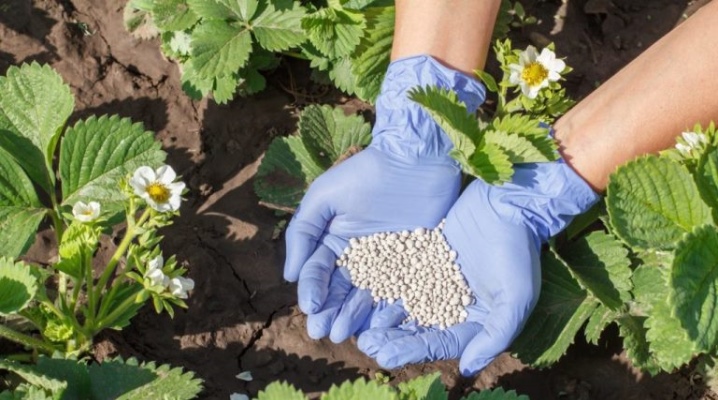
Successful cultivation of any plant is possible only with the regular application of suitable fertilizers. One of the key roles in this process is played by potassium magnesium, which enriches the soil with potassium and magnesium.
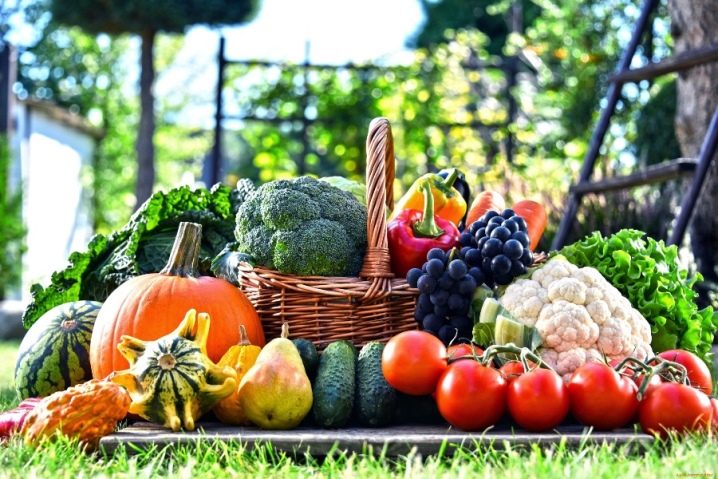
What is it and what is it for?
Potassium magnesium is a chlorine-free potassium-magnesium fertilizer, the so-called double salt. Among gardeners, it is better known under the name "Kalimag" or "Potassium Mag". These products are available in all specialized stores. The mixture is available both in powder and in the form of granules, and its shade can be both pink and grayish. Potassium magnesium has good solubility, since it contains water-soluble salts - magnesium sulfate and potassium sulfate. The purpose of the Kalimag is quite extensive.
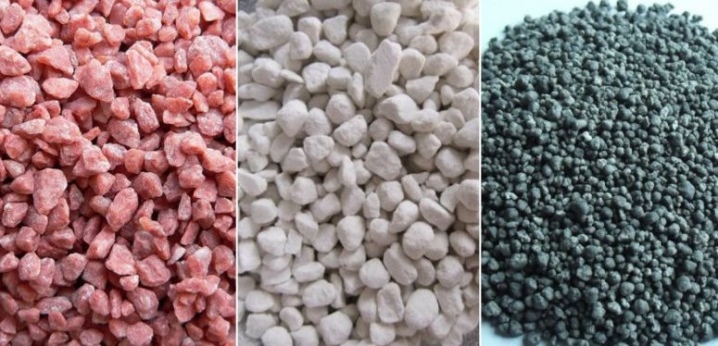
Fertilizer is recommended for those crops that do not react well to chlorine, but require magnesium with potassium for their development.
In this case, we are talking about potatoes, buckwheat, peas, tobacco, tomatoes, grapes and others. In addition, the use of potassium magnesium gives the desired effect, regardless of the type of soil.
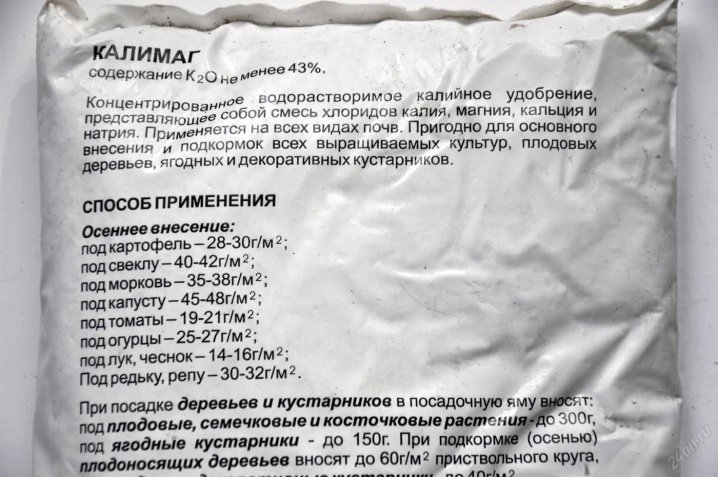
The mixture works best on sandy and sandy loam surfaces. Potassium sulfate is indispensable when grown in peat and turf areas poor in this element. If the soil has high acidity, then it is better to supplement the potassium magnesium with lime.
Regular use of "Kalimag" improves soil properties and significantly increases fertility. Crop growth is accelerating, and carbon synthesis is changing significantly for the better. Moreover, prevents the leaching of magnesium from the earth... The most effective action of the drug on poor soils that do not contain chemical compounds. It should be added that the effect of feeding is maintained throughout the year.
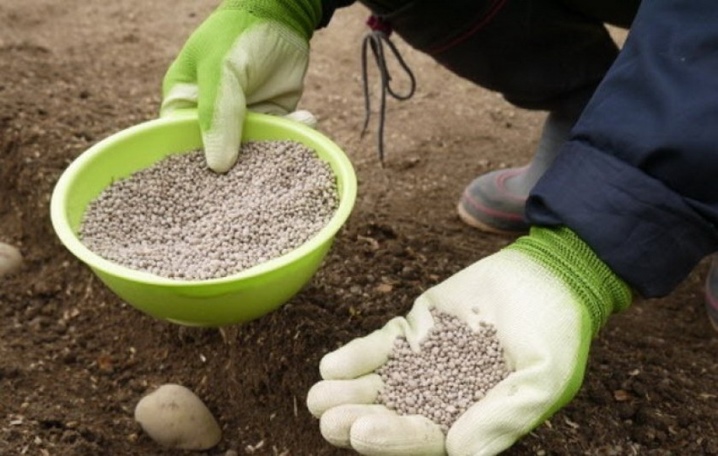
Kalimagnesia should not be used on chernozems, since magnesium in them is already present in the required amount, and potassium sulfate balances with a lack of sulfur. There is no need to feed the composition and salt marshes, which are initially rich in potassium and do not require additional application.
Composition
The effective formula of potassium magnesium is approximately as follows: 28-30% potassium, 17% magnesium, 10-15% sulfur, and 1 to 3% chlorine... Such a low content of the latter element classifies the drug as chlorine-free. In principle, the amount of potassium may differ, but it must be at least 26%, the amount of magnesium should be 10%, and the amount of sulfur should reach 17%.
Experts say that such small deviations will not affect the effectiveness of the drug.
The fact that the active substances are present in the composition in the form of salts of magnesium sulfate and potassium sulfate determines the method of introducing Kalimag - both in dry and liquid form.
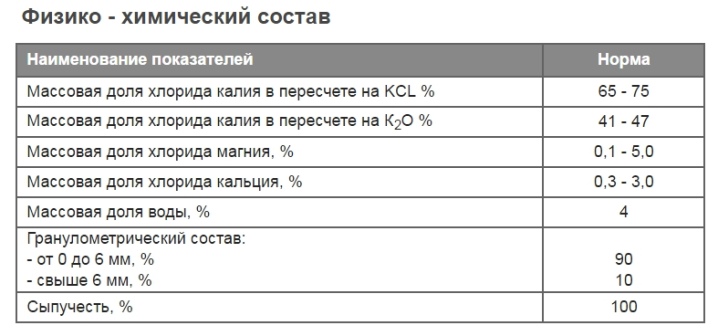
Magnesium
The most important characteristic of magnesium is participation of matter in the process of photosynthesis. In addition, this substance increases the absorption of phosphorus, and also accelerates the accumulation of ascorbic acid and carbohydrates in fruits. An insufficient intake of magnesium, which is especially characteristic of acidic soils, leads to the fact that the color of the leaf plates changes - the space between the veins first turns yellow, then turns orange, and then becomes red or brown. The fruits are less tasty, and the amount of starch in the tubers decreases.
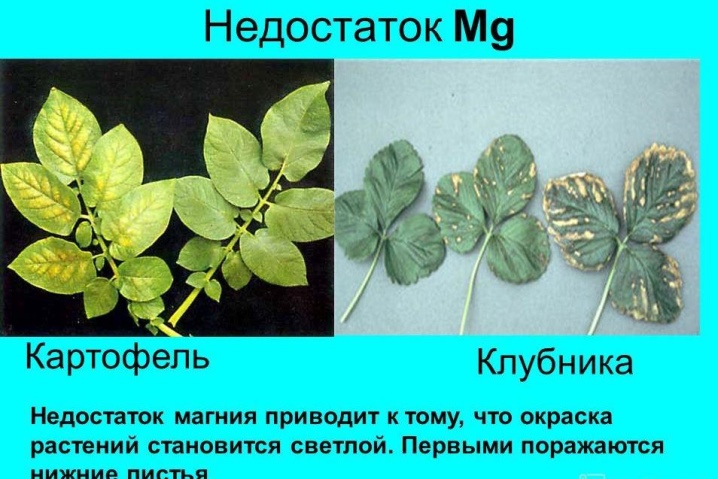
Potassium
The presence of potassium in the fertilizer improves the ability of plants to absorb water, strengthens the immune system and increases resistance to temperature extremes. In addition, this element stimulates the formation of ovaries and tubers, and also improves the quality of fruits... A plant regularly fed with potassium tolerates winter much more efficiently.
The lack of potassium leads to a slowdown in the development of the culture. The leaves of the shrub turn yellow or brown, become covered with spots, and the shape of the cucumbers changes from a neat oval to a pear-shaped one.

Sulfur
Of all plants the greatest need for sulfur is present in legumes and cabbage crops. This substance promotes better root development, and also provides better and faster regeneration. With regular feeding, chlorophyll is much better formed, metabolic processes take place.
Lack of sulfur leads to the fact that leaf plates decrease in size and gradually lose pigment. In addition, root development slows down over time.

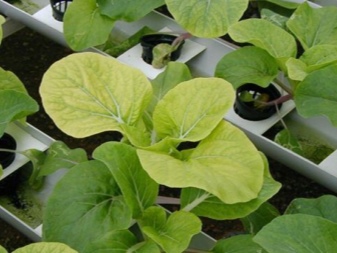
How to apply?
The use of potassium magnesium for the garden has its own specificity, depending on the amount and variety of nutrients already present in the soil.... On average, the dose of application of the drug reaches from 100-150 to 300-350 kilograms per hectare.
If Kalimag is used as root feeding, then it will take about 10 grams per square meter, and for the main application it is necessary to increase the dosage to 40 grams per square meter. To replenish the content of potassium and magnesium in soil in spring, for light soils, 10 grams per square meter is used, and in autumn on clay soils, somewhere around 20 grams per square meter is used. In this case, it is more convenient to apply fertilizers during digging or plowing. When applying drugs to the furrows, the amount is reduced by 2 times, and in greenhouses and greenhouses, the dose is reduced to 5 grams per square meter.
Fertilization during the growing season occurs according to instructions that are individual for different crops.
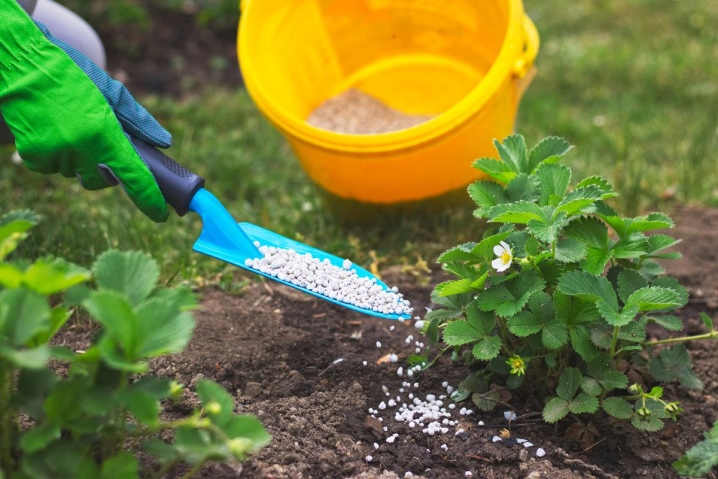
For grapes regular feeding with potassium magnesium is very important, since the fruits become sweeter, the bunches themselves dry less, and the shrub copes with the winter much more successfully. While the fruits are ripening, the bushes are watered with Kalimaga solution, and there is one bucket for each bush. To prepare the liquid, a tablespoon of the drug should be diluted in 10 liters of water. After 2-3 weeks, several foliar treatments can be carried out for grapes using the same solution. In addition, in the autumn, it is recommended to add 20 grams of potassium magnesium to the root circle, and then slightly loosen and moisten the soil. This action will provide the culture with a better wintering period.
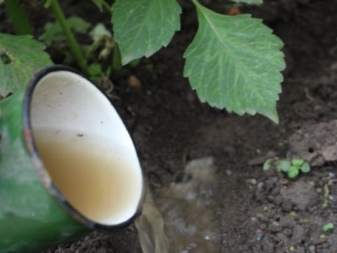
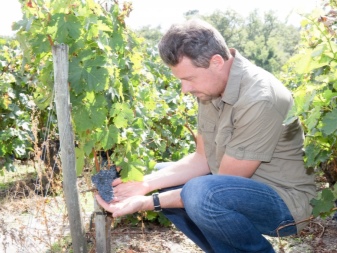
To feed tomatoes during spring digging, it is necessary for every 10 square meters, add from 100 to 150 grams. Further, during the growing season, the shrub can be alternately sprayed and watered with a solution of potassium-magnesium fertilizer, for which 20 grams of the mixture will need to be diluted in 10 liters of clean water. As a rule, from 4 to 6 such treatments are carried out per season. Regular use of potassium magnesium should increase the number of tomato fruits by almost one and a half times.
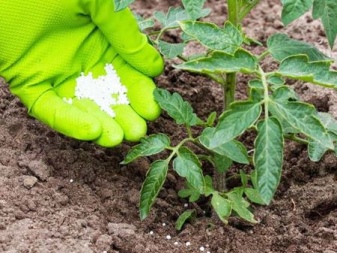
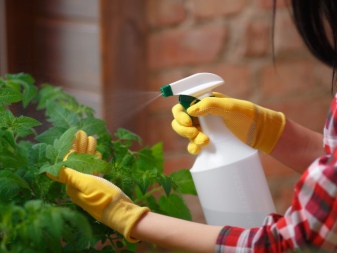
If fertilizer is purchased for roses, then you will need to carry out 2 types of processing: foliar before flowering and regular watering at the end of the season. To prepare the solution, you need to dilute 25 grams of the drug in a liter of water.
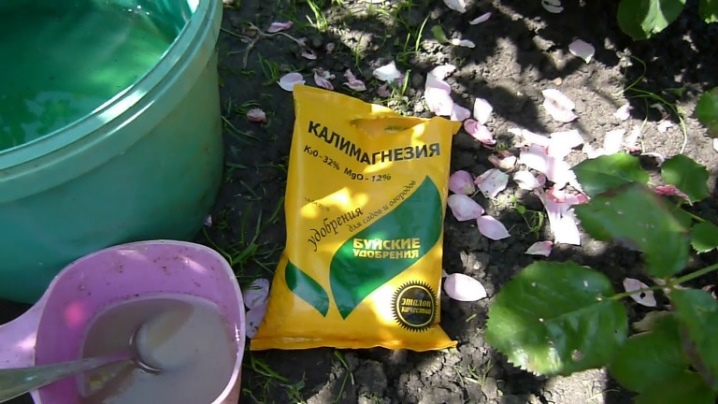
When growing cucumbers "Potassium Mag" is used during pre-sowing procedures, and it is better to use the drug either before rain or before watering. This culture requires 100 grams of substance per square meter. A couple of weeks after direct planting, 200 grams of the drug are applied to 100 square meters, and after another 15 days - 400 grams to the same area.
Additionally, it is recommended to enrich the beds with organic fertilizers, for example, bird droppings and mullein.
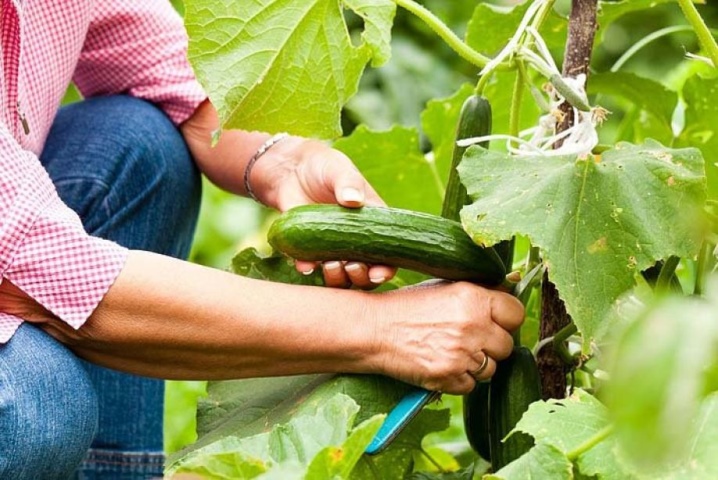
As for potatoes, this crop requires several applications of potassium magnesium per season. First, even before planting, a teaspoon of the substance is laid in each hole. Further, before hilling, each square meter must be enriched with 20 grams of the drug. Finally, when the tubers have already begun to actively form, it will be necessary to add the same 20 grams of the mixture, diluted in 10 liters of water. If necessary, another foliar procedure can be arranged when the buds begin to form.

When growing cabbage potassium-magnesium fertilizer is laid during loosening into pre-moistened soil. For each instance, you will need to use 10 grams of substances.
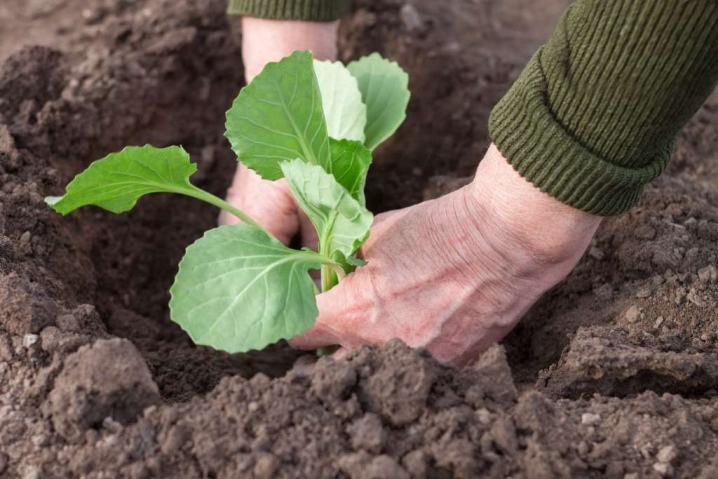
Carrot requires the introduction of 30 grams of the drug per square meter. It is best to process in the spring to ensure the sweetness of the roots and increased fruiting.

When planting beets each square meter of planting is enriched with 30 grams of potassium magnesium. In addition, when the underground part begins to thicken, root treatment can be carried out by preparing a solution of 25 grams of the drug and 10 liters of liquid. The same processing will be required for onions and garlic.
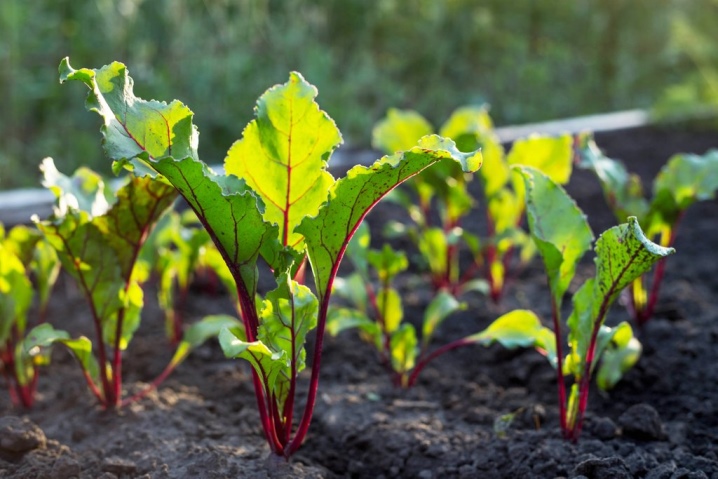
When growing raspberries fertilizer will need to be applied when the crop begins to bear fruit. Culture requires the use of 15 grams of the drug per square meter.
Fertilizer is best embedded around the perimeter of the bush in pre-irrigated soil, deepening the granules by 20 centimeters.
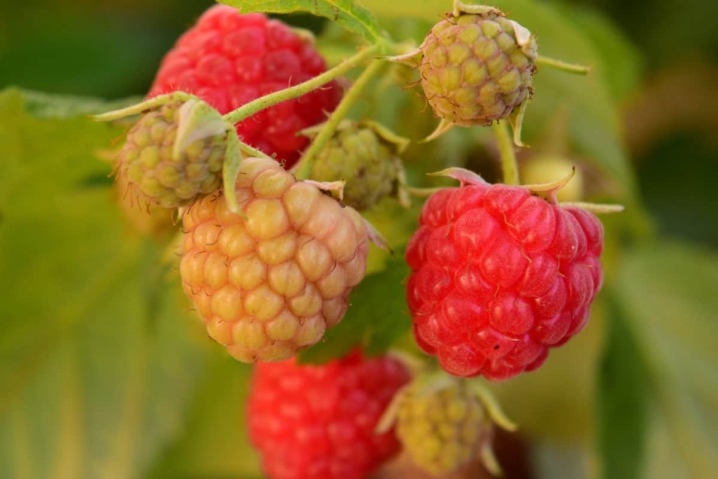
Decorative conifers fertilized with "Kalimag" in autumn and spring. For each square meter, it is customary to make 35 grams of the drug, and departing from the trunk by 40-50 centimeters.
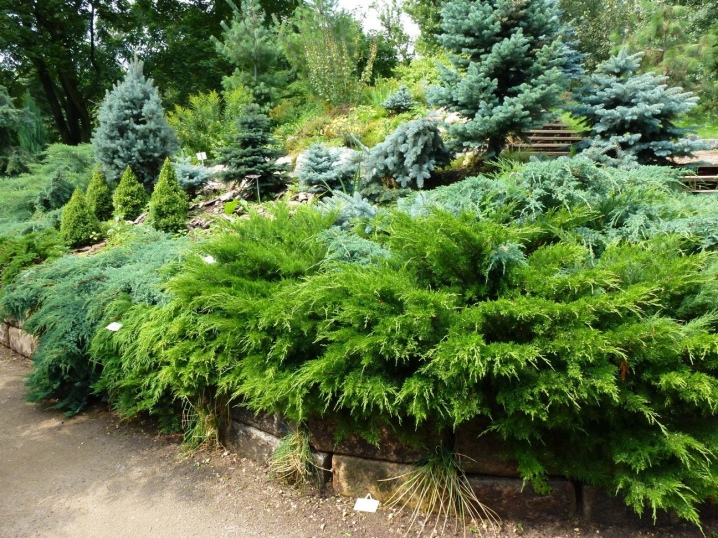
Usage Tips
Calculating how much of the drug is required for a particular culture, it must be remembered that 1 gram of potassium magnesium occupies one cubic centimeter in space, and therefore a teaspoon with a volume of 5 cubic centimeters contains 5 grams of the drug. A tablespoon, in turn, contains 15 grams of the substance, and ordinary faceted dishes with a volume of 200 milliliters - as much as 200 grams.
It is forbidden to mix Kalimag with growth stimulants, pesticides and urea, but the combination with other dressings will not harm.
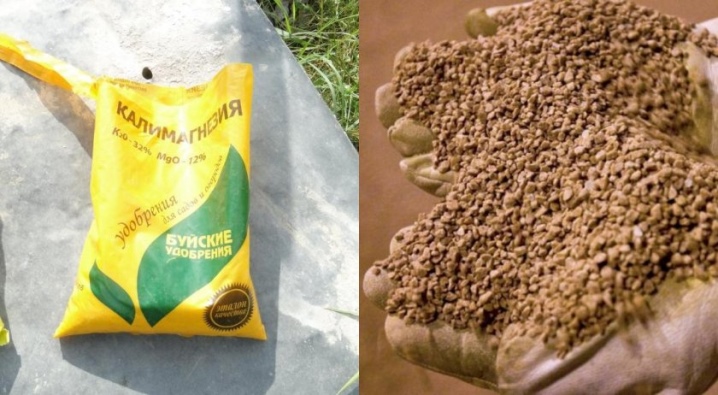
When working with potassium magnesium, be sure to gloves and a respirator are required. If the drug comes into contact with the skin, then it must be immediately rinsed with a large volume of liquid.
For the rates of application of potassium magnesium, composition and feeding, see below.













The comment was sent successfully.